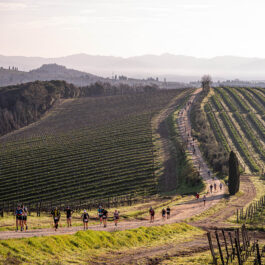Food
The Spirits Of Latin America: What To Drink And Where
1Latin America’s burgeoning cocktail scene has opened the doors to a whole new world of local spirits, unique thirst quenchers that define a rich sippable culture and heritage. From Bogotá to Buenos Aires, Mexico City to Asunción, we drank our way across ten cities to reveal the essential Latin American spirits you must try.
By Allie Lazar
0/11
Food
The Spirits Of Latin America: What To Drink And Where.
2Rio de Janeiro, Cachaça – Lounging on a beach and clutching a fruity cocktail: that’s pretty much what Rio de Janeiro is all about. Cachaça (pronounced ka-SHA-sa), the clear rum-like liquor used to make caipirinha (the national cocktail), has been part of Brazilian culture for over 400 years. It is made from fresh-pressed, unprocessed sugar cane juice, and tastes sweet and clean, with vegetal aromas. “When people think of cachaça, they think caipirinhas,” says Alex Mesquita, Global Ambassador for Leblon Cachaça. “But there are many drinks essential to try, like Rabo de galo, with cachaça and vermouth rosso.”
1/11
Food
The Spirits Of Latin America: What To Drink And Where.
3Bogotá, Aguardiente Colombiano – In many countries, aguardiente is a synonym for a distilled alcohol, but for Colombians, this sugar cane and anise spirit is a way of life. “Aguardiente is a part of our culture,” top bartender Juan Valderrama says. “It’s essential at every celebration. It’s a symbol of friendship and happiness.” Most locals will sip on aguardiente – which literally translates to ‘firewater’ and tastes like sambuca – in a shot glass, without ice. “Usually aguardiente isn’t mixed in cocktails, but when it’s cold in Bogotá, we drink canelazo, warmed aguardiente with cinnamon, panela and lemon,” Valderrama explains.
2/11
Food
The Spirits Of Latin America: What To Drink And Where.
4Buenos Aires, Fernet – Spanish and Italian immigrants brought rich aperitif drinking rituals to Argentina. But no one spirit skyrocketed to popularity quite like Fernet, the medicinal Italian digestive aid that became just as culturally significant as steak and soccer. Fernet, an amaro, is made from over a dozen herbs and spices. “In Italy, they drink Fernet alone or with soda water,” bartender Inés de los Santos remarks. “But here, we drink Fernet with coca cola, which counteracts the bitterness.” At Julep, de los Santos’ mobile bar, she prepares the Chic Fernet: Fernet Branca, orange juice, orange wedges, orange syrup and purple basil garnish. [Photo: flickr.com]
3/11
Food
The Spirits Of Latin America: What To Drink And Where.
5Santiago, Pisco – While the great debate on whether pisco belongs to Chile or Peru has yet to be settled, there’s no questioning Chilean love for the local spirit. Pisco, a type of brandy comparable to grappa, can be distilled from three varieties of grapes: moscatel, torontel or Pedro Ximenez. “Pisco is no longer served as an aperitif or digestif,” Rodrigo Muñoz Miranda of Room 09 bar tells us. “Today, we see both classic and reinvented pisco cocktails.” The most popular? Pichuncho, Piscola, Piston, Catalina and, of course, the sweet Pisco Sour, with pisco, lemon juice, simple syrup, egg white and bitters. [Photo: flickr.com]
4/11
Food
The Spirits Of Latin America: What To Drink And Where.
6Havana, Rum – In Cuba, rum is more than an alcoholic drink: it’s part of the country’s identity, powering the economy for decades. The distilled alcohol made from sugar cane juice or molasses has many variations and flavours depending on the type, brand and aging process. Not only is Cuba known for producing the best rum, but Cuban cantineros (bartenders) also invented classics like the Cuba Libre (cola, lime and rum); the Mojito (white rum, sugar, lime juice, soda water and mint); and the Daiquiri (rum, citrus juice and sugar). [Photo: flickr.com]
5/11
Food
The Spirits Of Latin America: What To Drink And Where.
7Asunción, Paraguay – “Caña represents Paraguay,” says Cesar Ocampo, Brooklyn Hotel bartender in Asunción. Caña, made from sugar cane and aged in oak barrels, has a smooth and sweet flavour similar to aged rum. “Locals mix caña with fresh grapefruit juice, but my favourite is Nde rendape aju,” Ocampo explains. “It’s an expression in Guaraní that means ‘I’m close to you’, honouring women who brought water to their husbands during the war.” The cocktail is made from cedron, raw honey, lemon, mint and Fortin caña Black Label Special Edition.
6/11
Food
The Spirits Of Latin America: What To Drink And Where.
8Mexico City, Mezcal – “Mezcal represents modern Mexican gastronomy,” says Jose Luis Leon of LimanTour, ranked the best bar in Latin America for three consecutive years. For decades, locals frowned upon mezcal drinkers for being ‘low class’, but now, there’s a resurgence of the smoky agave spirit. While most drink a shot glass of mezcal with an orange slice, gusano (worm) salt and cold beer, Leon created a cocktail that celebrates Mexico and Latin America: the Vicuña, with mezcal from Guerrero, Chilean pisco, smoked pineapple juice, agave honey and lemon juice, garnished with dehydrated vegetables. [Photo: flickr.com]
7/11
Food
The Spirits Of Latin America: What To Drink And Where.
9Lima, Gin – “Even though pisco is the most popular spirit in Peru, over the past two years Peruvian gin, like Gin’ca, has exploded onto the Lima bar scene,” says bar consultant Iván de los Rio. The citrus gin is made from local sugar cane and native Andean botanicals like huacatay (Peruvian black mint), molle (pink peppercorn) and lemons, and distilled in a copper pot at the Inca Distillery in Lima. “I like to use the gin in a classic Gin and Tonic during lunchtime, or in a Negroni for dinner aperitif.”
8/11
Food
The Spirits Of Latin America: What To Drink And Where.
10La Paz, Singani – Singani, made from Muscat of Alexandria grapes, is Bolivia’s favourite native spirit. Since distillation occurs in neutral vessels high in the Andes mountains (more than 1500 metres altitude), the aromatic grape flavour remains strong, floral and present with every sip. “Most Bolivians drink the Chufly, singani with ginger ale, but it’s also very friendly to infusions,” states Bertil Tottenborg, sommelier at Gustu in La Paz. “At our bar, we infuse singani with ingredients like chamomile, fermented plantains, pink peppers and purple potatoes.” The Rosita Camba is one of the restaurant’s signature cocktails, combining singani with Bolivian chocolate bitters, tamarind, citrus and egg white.
9/11
Food
The Spirits Of Latin America: What To Drink And Where.
11Montevideo, Grappamiel – “Locals drink mostly whisky and wine, but the one spirit that’s identifiably Uruguayan is grappamiel,” says Alvaro Aniano, bartender and creator of Soy Cantinero cocktail accessories. Just as its namesake infers, grappamiel – containing 20-25% alcohol – consists of grappa and miel (honey). During winter, many drink grappamiel alone, and in summer, with ice and lemon. “Musicians and singers especially drink grappamiel, especially during Carnaval, because it warms up the throat before a performance,” Aniano explains. His favourite signature cocktail? Rachel #3, served in a julep cup with grappamiel, mint, lemon, guaco plant syrup and lemon bitters.
10/11
Food
The Spirits Of Latin America: What To Drink And Where.
Poll Spiritis11/11















Sorry, the comment form is closed at this time.